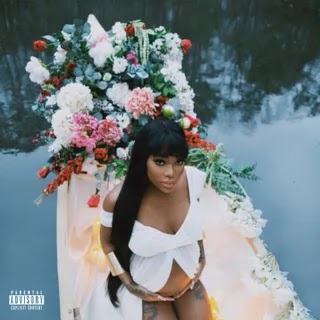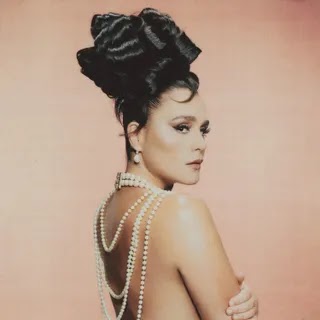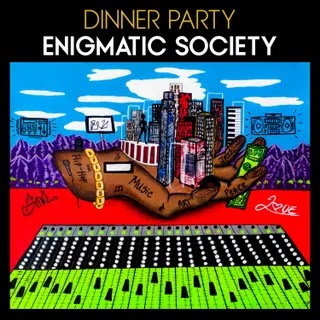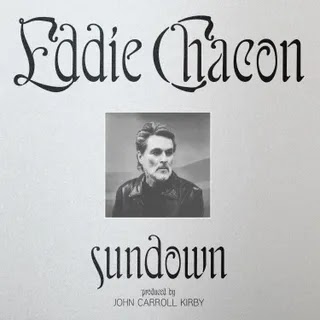Each Sunday, Pitchfork takes an in-depth look at a significant album from the past, and any record not in our archives is eligible. Today we revisit the 1978 album from an icon of soul and disco, a formative record in the queer canon.
On New Year’s Eve, 1986, Sylvester appeared on The Late Show With Joan Rivers in a towering, orange sherbet-colored wig and a sequined pantsuit. It had been nearly a decade since his breakthrough single, the mirrorball disco hit “You Make Me Feel (Mighty Real),” from 1978’s Step II, and the famously androgynous San Francisco singer had built up an easy rapport with Rivers; they’d previously worked together at an AIDS benefit, before the pandemic gained national attention. The conversation eventually eased into some expected ribbing: “What did you say when your family found out you wanted to be a drag queen?” Rivers asks.
“I am not a drag queen!” the singer guffaws, tossing back that fiery mane. “I am Sylvester.”
Simple and matter-of-fact, the retort is a snapshot of the disco maven as he forever intended himself to be: a one-of-a-kind talent in no uncertain terms—Sylvester—destined for stardom long before the world was prepared for it. He melded gospel, funk, and disco to create a spangled, unforgettable impression on the ’70s and ’80s, and through it all, Sylvester remained resolutely himself. The qualities about him that were so often marginalized—Black, gay, and feminine—were the same ones that made him an undeniable star.
Born Sylvester James in South Central Los Angeles, he was fed an early musical education from his doting grandmother and Pentecostal church choirs, where he studied Aretha Franklin interpretations and honed a featherlight, inimitable falsetto. Sylvester joined a troupe of drag queens named the Disquotays in his teens, fixing the crew’s wigs and outfits and floating from party to party under the cover of night to dodge laws forbidding drag in California. He left home in 1970 for San Francisco. It was there, in the queer, roving melting pot of the Castro, where Sylvester began to perform.
Sylvester flourished in San Francisco, which quickly became his adopted home city for its sense of sexual liberation; no other city could quite contain him. He joined the renegade drag act the Cockettes and taught them gospel, but otherwise clashed with their outrageous brand of sketch comedy. Yet his appearances with the group—and especially his soaring solos—quickly turned Sylvester into an underground sensation. In 1972, when David Bowie failed to sell out his first San Francisco show, he told reporters, “They don’t need me; they have Sylvester.”
A seed had been planted, and Sylvester began to perform solo as the doyenne Ruby Blue, a jazz and soul persona influenced by his grandmother that he’d first assumed with the Cockettes. He played at the Rickshaw Lounge in Chinatown, singing standards by early icons like Ma Rainey, Bessie Smith, and Lena Horne. Ruby came about, in Sylvester’s words, to inhabit “the mystery of it. The freedom of it. The glamour of it.” Here, the genesis of Sylvester’s music was born, rich in soul and spiritual traditions, with a high tenor capable of trying on different feminine vocal styles at a whim.
Sylvester’s gender identity was purposefully inscrutable. His costumes oscillated between feminine extremes, sporting tinsel tutus with bouffanted wigs, but offstage he could be just as muted. Sylvester was equally comfortable trying on “butch” signifiers like leather pants or a close-cropped haircut; both sides lived within him at all times. He insisted that he never thought about his sexual identity onstage, citing a piece of advice given to him by another one of his idols, Josephine Baker: “The illusion you create onstage is all.” Sylvester defied categorization at every opportunity, and shrugged off questions intended to pin him down with the same cool he maintained on record: “Look dear, being gay means absolutely nothing except to straight people,” he sniped to a nosy reporter in 1978.
By the time Sylvester began to cut his own records, having signed to the San Francisco label Blue Thumb, he was still finding a niche. His rock-funk music, performing as Sylvester and the Hot Band, was far from the synthy, formulaic disco beginning to dominate both the charts and the gay clubs he frequented. Sylvester was a casual disco fan at best, and it wasn’t until he signed with jazz label Fantasy, by way of veteran producer Harvey Fuqua, that he fully leaned into the vision. Sylvester released a soulful self-titled album in the summer of 1977 and followed it up the next year with the glittering Step II, which remains his most precise and dazzling album.
The album’s opening one-two punch, “You Make Me Feel (Mighty Real)” and “Dance (Disco Heat),” both flaunt Sylvester’s musical genius, but the former is his his crown jewel. Working with a band led by guitarist James “Tip” Wirrick, the singer intended it as a traditional ballad and wrote lyrics off the cuff in the studio. The arrangement morphed into something else entirely once Patrick Cowley, a friend and producer obsessed with Giorgio Moroder and Euro-dance eccentrics, got a hold of the song and infused it with a synthesized disco pulse. (“I’ll always love and be grateful to you,” reads Sylvester’s dedication to Cowley in Step II’s liner notes, “for being right on time.”) “You Make Me Feel” pumps with the same space-age DNA as Donna Summer’s “I Feel Love,” released just the year before, only with Summer’s wispy voice replaced by Sylvester’s high-wire depiction of the era in San Francisco: “To dance and sweat and cruise and go home and carry on and how a person feels,” as he described it. His falsetto dances along with tense breath control until he screams that orgasmic chorus, a full-throated Pentecostal spiritual transformed into an instant disco crowdpleaser.
Sylvester believed there were “enough love songs in the world like there were enough children,” yet Step II throbs with passion. Sylvester covers Burt Bacharach and Hal David’s swaying “I Took My Strength From You,” elongating his vocals into gossamer threads and bending the song into a pure devotional. “Was It Something That I Said,” a rolling R&B song co-written with Fuqua, opens with a back-and-forth between Sylvester’s beloved backup singers, Martha Wash and Izora Armstead (aka Two Tons o’ Fun, who would later form the Weather Girls). “Child, have you heard the latest?” they titter. “Uh-oh, what’s goin’ on now? About Sylvester breakin’ up?” He recalls receiving a letter with a phone number, only to call and find it disconnected. The fallout leaves him overcome, a miniature tragedy writ large with funky keys, horn licks, and a spoken-word bridge.
Step II and “You Make Me Feel (Mighty Real)” led Sylvester to international success. The album went gold (celebrated by the label with wine bottles pressed with Step II labels, no less), and Sylvester made a slew of TV appearances where he put on brassy performances for national audiences. He opened for acts such as the Commodores, the O’Jays, and Chaka Khan, and extensively toured Europe, whipping fans abroad into a Beatles-style mania. Practically overnight, all of Sylvester’s dreams of stardom had become a reality, and he hadn’t forsaken any part of himself to get there.
Sylvester received the keys to San Francisco on March 11, 1979, and “You Make Me Feel” was inducted into the Library of Congress in 2018, formally confirming Sylvester’s impact on American culture at large. Go to any gay club or Pride event worth its salt and you’ll hear “You Make Me Feel” blaring over the speakers at some point, spinning open and sending every person to the dancefloor to commune. Remnants of the ballad version appear on a reprise halfway through Step II, but look no further than the ascendant, gospel rendition on 1979’s live album Living Proof, recorded at San Francisco’s War Memorial Opera House, for hard proof of the song’s divine power, no matter the conduit: Sylvester breaks from the propulsive beat for a slowed-down interlude bolstered by a choir, his voice climbing into an angelic upper register that blows the wind out of you.
Sylvester died at 41 of AIDS in 1988, just a year after his longtime husband, architect Rick Cranmar, died of the same. Cowley, too, died of AIDS in 1982, the same year the two recorded the sleek Hi-NRG blast “Do You Wanna Funk?”; Cowley became one of the first publicized deaths from the virus. Sylvester also put a face to the crisis when he led the People With AIDS group in a wheelchair at the 1988 San Francisco Pride Parade. “He’s allowing us to celebrate his life before his death, and I don’t know a single star who has the integrity to do that,” the novelist Armistead Maupin wrote afterward.
The toll that AIDS took on our queer forebears can never be overstated, but Sylvester’s loss is especially heavy on the mind. He often said he would earn enough money to retire at an early age, move somewhere bucolic, and do absolutely nothing for the rest of his days. Even with over 20 years of glamour and success, it hurts that Sylvester never got that future. “I don’t want much—just a fabulous time,” he said the year Step II came out. “I have quite normal feelings but I like to take on a little bit more excitement than most. I am what I am, I do what I do, I know what I am, I live for what I feel.” Through his extraordinary style and boundless imagination, Sylvester generously paved the way for all of us to do the same.
















0 comments:
Post a Comment